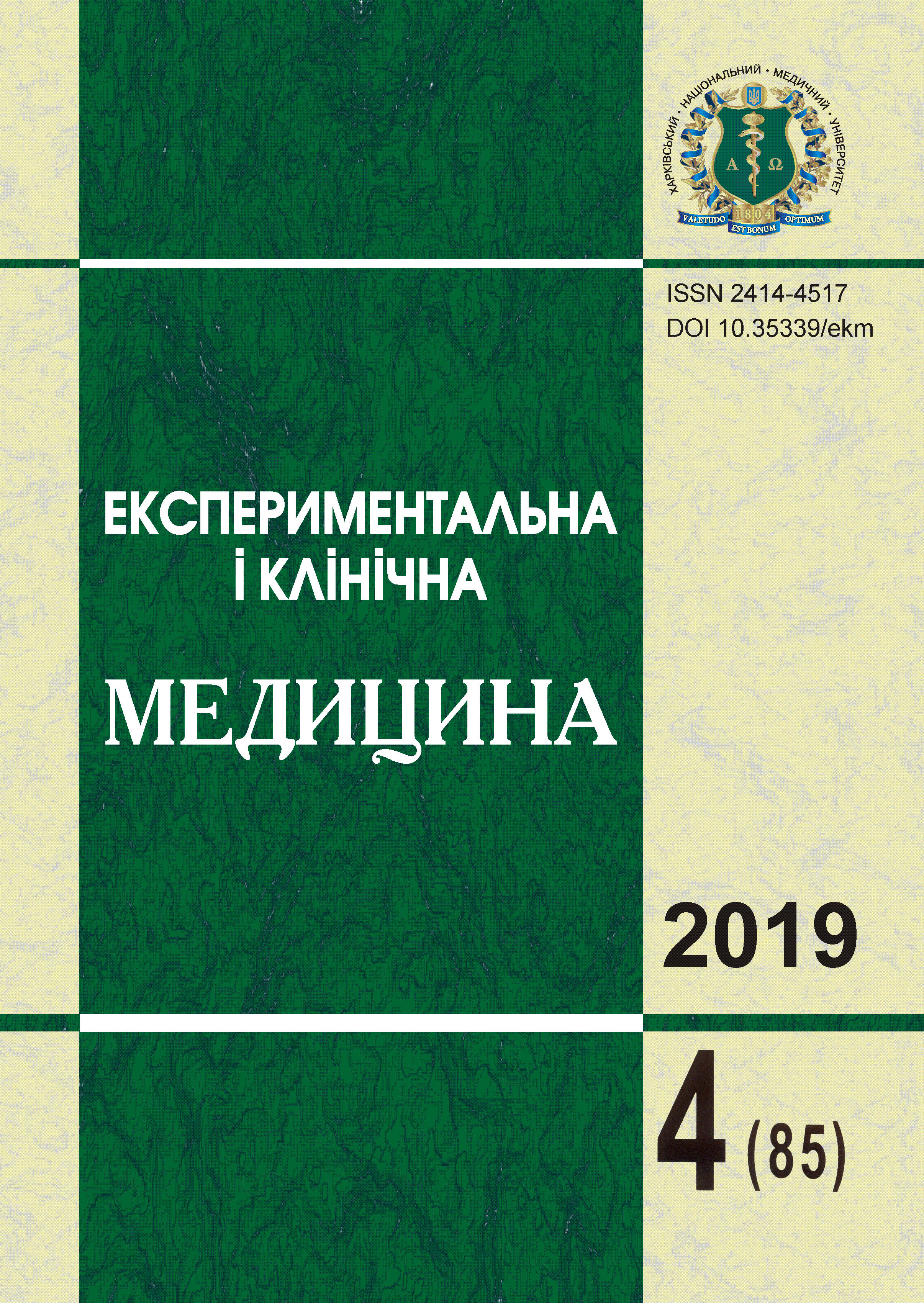Abstract
A comprehensive system of treatment and rehabilitation measures for the initial episode of bipolar affective disorder is proposed, which is implemented in three interrelated stages: a psychodiagnostic stage, which provides a comprehensive clinical and psychodiagnostic analysis to determine the clinical option; the stage of complex therapy, which involves the combination of psychopharmacology with normotymics, antidepressants, atypical neuroleptics with psychoeducation, compliance therapy, family therapy, work with comorbid mental and narcological pathology; and the stage of psychosocial rehabilitation and prevention, which includes supportive psychopharmacological therapy and psychosocial therapy and rehabilitation activities. We conducted a clinical psychodiagnostic examination of 88 patients with a primary episode of Bipolar Affective Disorder (PE BAD) who were treated at the Ternopil Regional Psychoneurological Hospital during the period 2011-2016 in compliance with the principles of biomedical ethics. The following groups were formed from them: 1) 34 patients with depressed variant of PE BAD, who received treatment according to the proposed scheme; 2) 33 patients with depressive variant of PE BAD who received treatment according to the traditional scheme; 3) 11 patients with a manic variant of PE BAD who received treatment according to the proposed scheme; 4) 10 patients with a manic variant of PE BAD who received treatment according to the traditional scheme. The results were compared in pairs in each of the clinical groups according to the clinical version of PE BAD. The evaluation was performed before the start of treatment and 6 months after the start of treatment in three main areas: dynamics of mental state (complete clinical remission, significant improvement of mental state, improvement of mental state, slight improvement of mental state); dynamics of changes in psycho-emotional state based on the results of evaluation using standardized psychodiagnostic tools (M. Hamilton Depression and Anxiety Scales, The Zung self-Rating Depression Scale, Bipolar Diagnostic Scale); the dynamics of quality of life indicators according to the Scale of Quality of Life Mezzich et al. in the adaptation of N.O. Maruta. The comparative analysis showed a higher effectiveness of the proposed therapy compared to the traditional relative clinical effect, normalization of the affective sphere and improvement of the quality of life of patients.
References
Faedda G.L., Serra G., Marangoni C. et al. (2014). Clinical risk factors for bipolar disorders: a systematic review of prospective studies. Journal of Affective Disorders, vol. 168, pp. 314-321.
Patel R., Shetty H., Jackson R. et al. (2015). Delays before diagnosis and initiation of treatment in patients presenting to mental health services with bipolar disorder. PLoS One, vol. 10, pp. 126-129.
Hayes J.F., Miles J., Walters K. et al. (2015). A systematic review and meta-analysis of premature mortality in bipolar affective disorder. Acta Psychiatrica Scandinavica, vol. 131, pp. 417-425.
Chakrabarty T., Alamian G., Kozicky J. M. et al. (2018). Cognitive functioning in first episode bipolar I disorder patients with and without history of psychosis. Journal of Affective Disorders, vol. 227, pp. 109-116.
Maruta N.A. (2011). Bipolarnoye affektivnoye rasstroystvo: diagnostika, terapiya, profilaktika [Bipolar affective disorder: diagnostic, treatment, prophylaxis]. NeyroNews - NeuroNews, vol. 8 (35), pp. 46-52 [in Russian].
Maruta N.A. (2011). Diagnostika bipolarnogo affektivnogo rasstroystva [Diagnostic of bipolar affective disorder]. NeyroNews - NeuroNews, vol. 4 (31), pp. 57-60 [in Russian].
Baldessarini R.J., Tondo L., Visioli C. (2014). First-episode types in bipolar disorder: predictive associations with later illness. Acta Psychiatrica Scandinavica, vol. 129, pp. 383-392.
Rowland T.A., Marwaha S. (2018). Epidemiology and risk factors for bipolar disorder. Therapeutic Advances in Psychopharmacology, vol. 8 (9), pp. 251-269.
Salvatore P., Baldessarini R.J., Khalsa H.M. et al. (2014). Antecedents of manic versus other first psychotic episodes in 263 bipolar I disorder patients. Acta Psychiatrica Scandinavica, vol. 129, pp. 275-285.
Pfennig A., Correll C.U., Leopold K. et al. (2012). Early recognition and intervention for bipolar disorders: state of research and perspectives (German). Nervenarzt, vol. 83, pp. 897-902.
Maruta N.A., Kozhina H.M., Kolyadko S.P. (2015). Rol psikhoobrazovaniya v kompleksnom lechenii bolnykh s rekurrentnym depressivnym rasstroystvom [Role of psychical education in the complex therapy of patients with the recurrent depressive disorder]. Ukrayins'kyy visnykpsykhonevrolohiyi - Ukrainian Bulletin of Psychoneurology, vol. 23, issue 4 (85), pp. 53-57 [in Russian].

